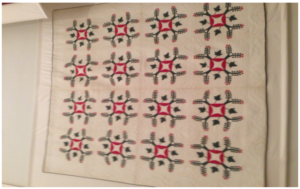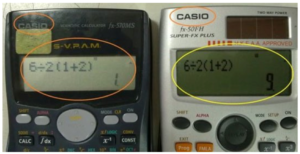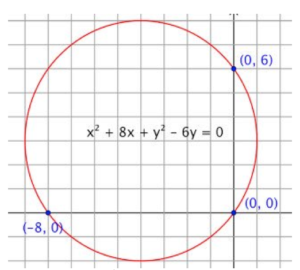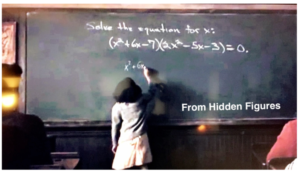FIVE! 5 Images to Inspire Mathematical Discussion
 FIVE!
FIVE!
5 Images to inspire mathematical discussion.Minnesota: The land of 10,000 words for every picture.
submitted by: Sara Van Der Werf
Teacher, Minneapolis South High School
MCTM President
Welcome to a new column in MCTM’s monthly MathBit’s communications called simply ‘FIVE!’. Each month we will bring you 5 of something to keep you connected to what is happening in mathematics and specifically, in the Minnesota Mathematics community. If you have ideas for this column, contact me at saravdw@gmail.com.
This month I am bringing you 5 images I’ve found on social medial that will inspire your students to ‘Notice & Wonder’ and encourage them to discuss math concepts in your classroom. One of my favorite ways to engage students at all levels into learning math in my own classroom is to use visuals connected to the mathematics I teach. Here are just 5 you may want to steal and use in your classroom.
ONE

First up is a math visual from Minnesota’s own Christopher Danielson. Christopher posted this picture with the question “How Many?”. I spersonally see many different numbers of different things….16, 64, 128….How about you? This picture was one of many pictures Christopher posted on twitter from his recent trip to the Minneapolis Institute of Art in which he posted tons of photos of art in which he saw mathematics. Christopher is well known on social media for posting pictures like the one above using the hashtags #arraychat & #unitchat. Christopher’s next book that will be published (hopefully this year from Stenhouse Publishers) will be entitled ‘How Many’. Occasionally Christopher tweets out questions about visuals from this book – check out this blog post someone wrote about one of his questions in which she created an entire elementary math lesson around a simple visual with the question ‘How many’.
TWO

My second pic is one I see floating around twitter from time to time. What a great visual to inspire a class discussion about the order of operations. This could be used in elementary school or in a high school classroom. Why do these 2 calculators give different results? Personally, I have a lot to say about the order of operations – for more of my thoughts, check out ‘PEMDAS (boo), Bathroom Signs (yea)’ from my personal math blog.
THREE

This picture is from Yummy Math. There are tons of activities you can download for free (in pdf form) or pay to get editable versions. My middle school teacher friends have loved this picture and have asked the question “What do you notice” and/or “What numbers would go in the numerators of each bit?”. At the Yummy Math site you can see the rest of the task and get the picture that answers the questions posed. This is a great site to explore for other visuals to use in your classroom. Yummy Math has resources sorted for grades 3-HS.
FOUR

David Wee’s posted this picture on February 26th on Twitter with the question (my favorite) ‘What do you notice?’. If you start playing around with this picture, you can build great conversations connecting geometry theorems to algebra. This is part of David’s free High School mathematics curriculum ‘New Visions for High Schools’. Check out the lessons this visual is connected with. Great stuff. I particularly love his ‘Contemplate then Calculate’ and ‘Connecting Representations’ Instructional Routines found in every lesson.
FIVE

This is a screen shot from the movie ‘Hidden Figures’ featuring a young Katherine Johnson at the board. As my coworkers and I completed our Advanced Algebra Polynomial unit we presented our students with this picture after removing the words ‘solve the equation for x’. We asked our students to predict what Katherine was going to do at the board. We then used this polynomial to review everything we had studied in our Polynomial unit – including using this graph on Desmos.
